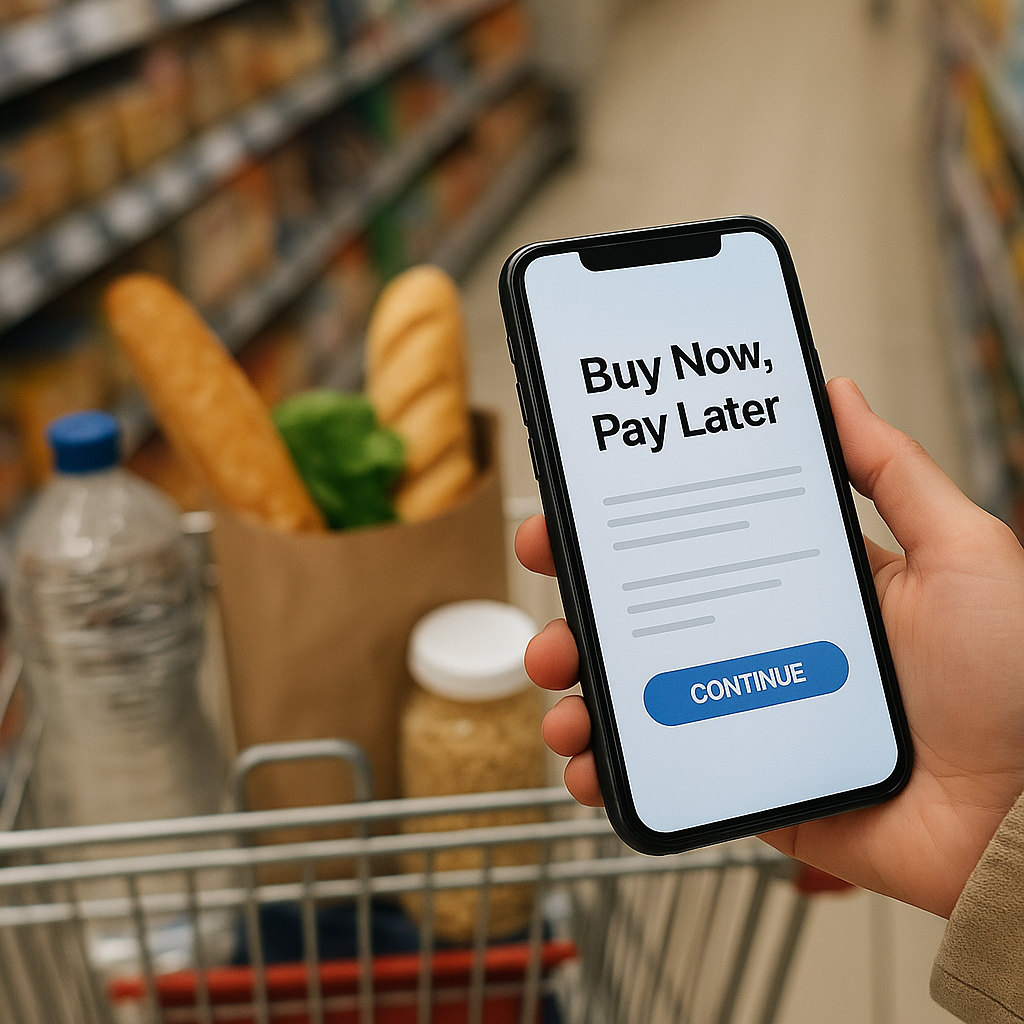“Buy Now, Pay Later” is moving into groceries and bills—here’s why that’s risky
“Buy Now, Pay Later” (BNPL) was meant for big purchases like furniture or gadgets. But more families are now using it for essentials such as groceries, utilities, and even medicine. That shift is a red flag.
BNPL’s rise
The BNPL market is booming, expected to grow 13.7% in 2025 to about $560 billion (Fintech Futures, 2025-01-15).
Its appeal is clear: small payments, no credit check, and “zero interest” if paid on time. But research shows people spend more when using BNPL (ScienceDirect, 2025-01-01).
Essentials on credit
Over half (52%) of BNPL users say they’ve used it for essentials, and 31% for groceries (Success, 2025-06-18). That means families are still paying for food long after it’s gone.
Many juggle multiple BNPL plans at once—nearly 60% report having more than one active loan (Investopedia, 2025-07-03). If payments are missed, late fees, collections, and even credit score damage can follow.
Why it matters
- Essentials disappear fast, but debt lingers.
- BNPL at checkout hides the fact you’re borrowing.
- Emergency savings may shrink as families lean on BNPL instead (Richmond Fed, 2024-12-10).
Regulators are paying attention: the UK now wants affordability checks even on loans under £50 (The Guardian, 2025-07-18).
Better options
Reserve BNPL for non-essentials, track all payment plans in one place, and keep even a small emergency fund. For long-term needs like education or a child’s first car, a savings plan is more reliable than debt.
Open a UNest UTMA and automate $25 – $50/month. Small, steady deposits may help build security without stacking short-term debt.
Wrap-up
BNPL for essentials may look like relief but often piles on stress. Building a cushion with tools like UNest can give families flexibility—without borrowing for next week’s groceries.



